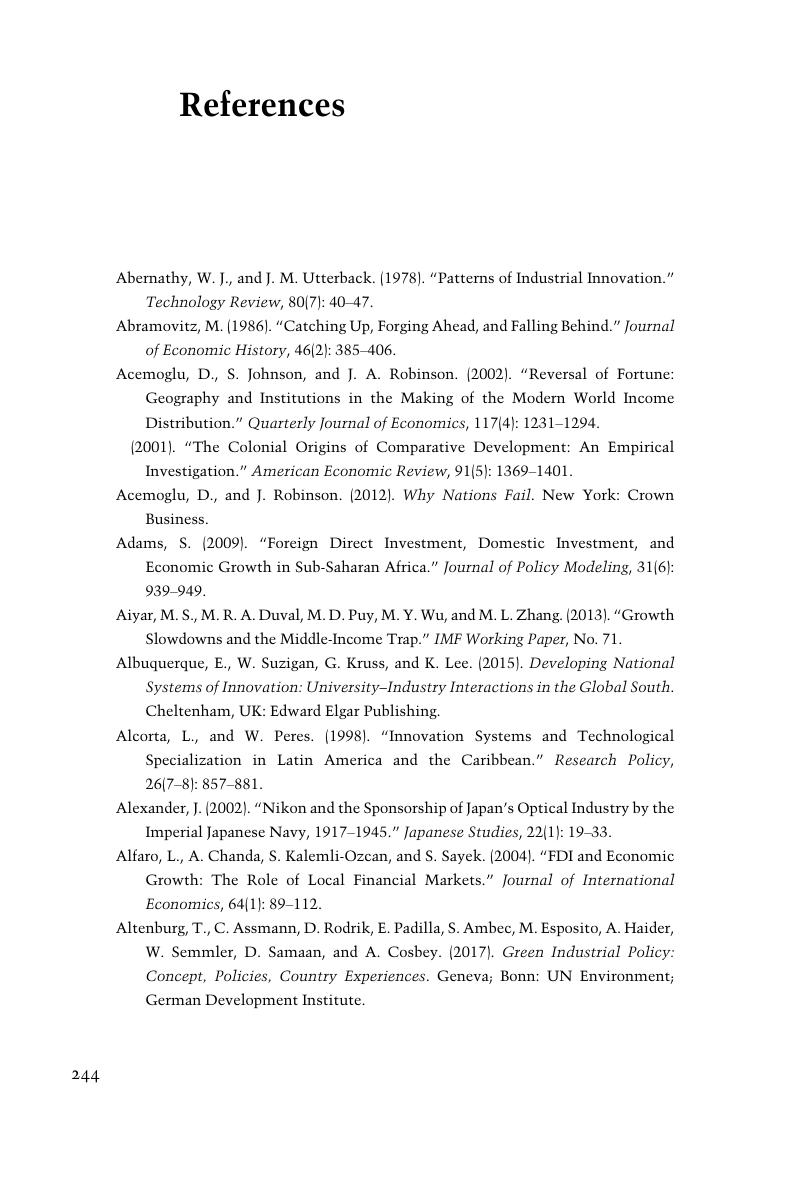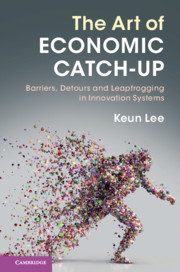Book contents
- The Art of Economic Catch-Up
- Reviews
- The Art of Economic Catch-Up
- Copyright page
- Contents
- Tables
- Figures
- Preface
- 1 Introduction
- 2 Different Mechanisms of Growth in Poor and Rich Nations and the Narrow Pathway in Between
- 3 The Three Detours and Capability-Building
- 4 Detour of Promoting Big Businesses and SMEs during Transition
- 5 Flying on a Balloon Out of the Windows of Opportunity
- 6 Recapitulation of the Art
- 7 Practicing the Art in Late Latecomers
- References
- Index
- References
References
Published online by Cambridge University Press: 11 April 2019
- The Art of Economic Catch-Up
- Reviews
- The Art of Economic Catch-Up
- Copyright page
- Contents
- Tables
- Figures
- Preface
- 1 Introduction
- 2 Different Mechanisms of Growth in Poor and Rich Nations and the Narrow Pathway in Between
- 3 The Three Detours and Capability-Building
- 4 Detour of Promoting Big Businesses and SMEs during Transition
- 5 Flying on a Balloon Out of the Windows of Opportunity
- 6 Recapitulation of the Art
- 7 Practicing the Art in Late Latecomers
- References
- Index
- References
Summary

- Type
- Chapter
- Information
- The Art of Economic Catch-UpBarriers, Detours and Leapfrogging in Innovation Systems, pp. 244 - 269Publisher: Cambridge University PressPrint publication year: 2019
References
- 1
- Cited by



